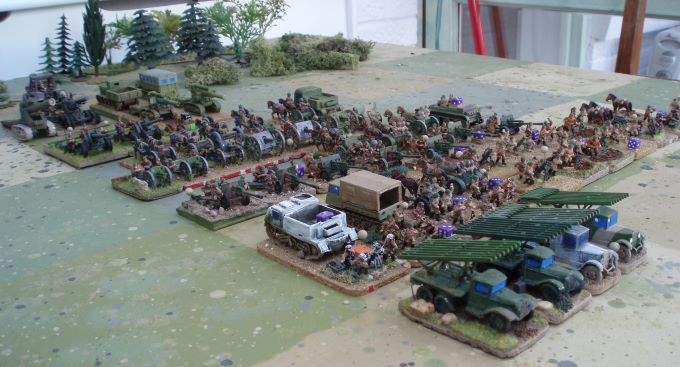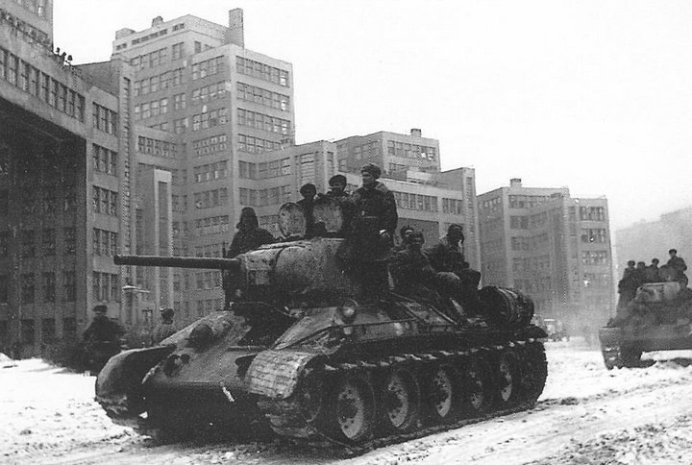
There were three assault gun battalions in the SS Panzer Corps at Prokhorovka, one in each of the three SS Panzer Grenadier Divisions (Leibstandarte, Das Reich, Totenkopf). They all started the offensive (on 4 July) with 34, 33 and 28 Sturmgeschuetz IIIs (in that order). These “tanks” were armed with the 75mm L48 guns (the same as the Panzer IVs) and has 80mm of frontal armor (which is more than the Panzer IVs, which had 80mm for the glacis but only 50mm for the turret).
As of the evening of 11 July I have them with 10 operational in the Leibstandarte (with one destroyed and 9 damaged that day), 27 operational in Das Reich (with one destroyed that day), and 21 operational in Totenkopf. So where were they and what did they do this day?
Well, according to multiple Russian accounts, there were some assault guns opposite the XVIIII Tank Corps. This is specifically stated as follows:
From: Combat Report #38, 0330, July 13, 1943
In attempting to reach the Belgorod highway, XVIII Tank Corps unexpectedly ran into the enemy’s well-organized resistance, which featured buried tanks and assault guns along the line ht. 217.9-ht. 241.6
From: Account of 18th TC’s Combat Activities, July 12-24 1943:
By the end of the day the enemy attempts a frontal tank attack from the Kozlovka-Greznoye area, with the simultaneous attempt bypass the corps; units from the Kozlovka-Polezheyva direction, using Tiger tanks and self-propelled guns and intensively bombarding our lines from the air.
XVIII Tank Corps encountered the enemy’s well-organized and powerful anti-tank defense, consisting of tanks and assault guns along the line of ht. 217.9-ht. 241.6.
From: Operational Report #1, 1900, July 12, 1943, 5th GTA
At 1400 the corps repulsed an enemy counterattack by 50 tanks from the Bororoditskiye area, and by 13 “Tigers” from the area of ht. 226.6
The Corps’ further advance was contained by the enemy’s powerful artillery and mortar fire from the Greznoye area, and by tank fire from the Bogoroditskoye area.
From: Operational Report #2, 0700, July 13, 1943, 5th GTA
18th TC, with 80th Gds Mortar Rgt, by the end of July 12 had taken the eastern outskirts of Vasilyevka, but its further advance was halted by the enemy’s artillery and tank from the area of the western outskirts of Vasilyevka. The corps is on the line Petrovka-Mikhalovka and has consolodated and is regrouping.
From: 5th Guards Tank Army’s Combat Activities from July 7-24, 1943 (compiled September 30, 1943)
In Andreyevka 181st TBde met a large column of enemy tanks. As a result of the battle that followed, the Germans suffered heavy casualties and were thrown back on Kozlovka.
The corps, on the line ht. 279.9-3 km southwest of Kozlovka-ht. 241.6, encountered heavy enemy fire resistance from assault guns, tanks buried in the ground, and fierce aerial bombardment, which made any further advance impossible.
This is all discussed in this post:
So What Were the LSSAH Tigers Doing?
According to Ben Wheatley, the Leibstandarte SS Assault Gun Battalion was in reserve south of the Stalinskii Sovkhoz and later supported the LSSAH Marders and 1st PzGrRgt around the farm area. This locale is a little over 3 kilometers from ht. 241.6 where the Tigers are. Waiting for the source on this, but if so, then the LSSAH assault gun battalion is accounted for.
The Das Riech SS Assault Gun Battalion was operating with Das Reich, so out of the area of our discussion right now (which is the XVIII and XXIX Tank Corps attack).
The location of the Totenkopf SS Assault Gun Battalion is not given in any of the material I have. It may have been on the north side of the Psel River. These panzer grenadier divisions often lumped the assault gun battalions with the reconnaissance battalion. The Totenkopf reconnaissance battalion was at one point on the division left (west) flank and south of the Psel, but not sure where it was on this day.
Also of note, the Leibstandarte reconnaissance battalion ended up defending (and being penetrated) by the attacking Soviet tanks of the XVIII Tank Corps.





